Uniqueness and diversity are behind almost every stone in Palestine. Every distinction retains a story to unfold, and every story bears a title that describes its core beauty and the key to the developmental strategy of its region and its growth as a micro cultural-heritage and tourism destination. In fact, every village or cluster of villages in Palestine is home to a certain competency, and its unique title is a description of its inherent heritage and a story of its beauty and attractiveness.
What are these core values and how can they be identified?
Core values of villages are derived from their resources and capacities through an exercise that searches for them through the hearts and eyes of the local residents and communities. Skipping the beauty of Palestine and its inherent diversity is not an uncommon practice in traditional tourism programs and portfolios. The fact that most international travel to Palestine is for pilgrimage has contributed to the marginalization of many potential micro destinations. The more distant the main religious site from the local destination the more marginalized it becomes. This, for example, is the case for important remote sites such as Burqin in the north or Bani Naim in the southern West Bank. It is also true for potential destinations that exist along the way to main sites such as the case of Beit Jala and Bethlehem. Needless to say, the political turmoil continues to be one of the main contributors to ongoing marginalization.
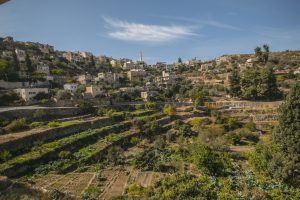
However, a careful look into certain attractive villages or clusters of villages that possess unique resources and sites can reveal a series of core values across Palestine that, when combined, are able to contribute to the rebuilding of Palestine’s national product. Some of the work that has taken place so far, in cooperation with the local communities, has produced the following core-value examples.
Battir, “The Hidden Paradise,” is proud to possess its world heritage agricultural terraces listed at UNESCO. These terraces, in addition to the water canals, Roman pool, and extensive biodiversity of its Makhrour Wadi, have gained the town this attractive title. The word “hidden” refers to the fact that the terraces are mostly hidden behind people’s homes. It is also inspired by the meaning of the name of the monastery of Hortus Conclusus in the nearby village of Artas, which means the enclosed garden.
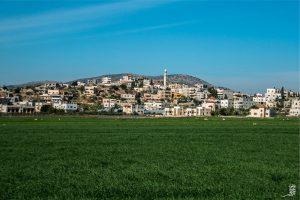
As Beit Jala, “The City of Carved Palaces,” was, and still is, famous for its masonry works and because some of Beit Jala’s buildings are of great artistic value, such as Jacir Palace, it is only logical to employ this value to become the key for the building of the town’s destination-management strategy.
“The Shrines of the Natuf,” a title that refers to the clusters of the villages of Bani Zeid, Deir Ammar, and others, is derived from the area’s abundance of shrines, such as Nabi Ghaith, Nabi Annir, Almajthoub, and Alkhawwas, on one hand, and the Natuf Valley, after which the Natuf civilization was named, on the other. Although the core value is described in a couple of words, it possesses an inherent narrative of history, heritage, identity, and characteristic natural beauty that is normally associated with shrines since they are often built on hilltops and mountains, commanding exquisite views of the nearby valleys and villages.
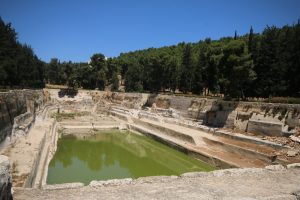
Similarly, Arrabeh of Jenin has acquired the title “Forgotten Palaces” in reference to the mostly abandoned palaces of the Abdel Hadi family in what once used to be one of the most prominent “throne villages” of Palestine.
“The Capital of Heritage” has been claimed by Birzeit in its endeavor to become a leading town in cultural heritage protection and promotion, hence, it was the first town to advocate for the holistic protection of historic centers. It has so far succeeded in attracting leading organizations in Palestine – such as Al-Nayzak and the Circus School – to move their headquarters to Birzeit historical center. Birzeit also continues to organize the leading iconic cultural heritage event, “Birzeit Heritage Week,” which takes place every summer when most of Palestine’s diaspora visitors come for vacations.
Another interesting story is that of Sebastia: the “Columns of Heaven,” referring to the columns of the basilica, are the first to be seen as one ascends from the village towards the Sebastia archeological park.
These values and the inherent cultural heritage elements that exist within them, if managed according to the principles of community-based tourism development, will become the keys to all the urban planning, tourism development, and various feasibility studies for potential investments and business initiatives.
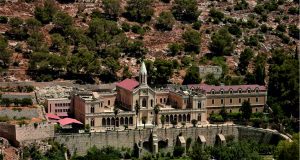
There are four important principles to keep in mind if community-based tourism is to become part of the national tourism strategy of Palestine.
Protection: What is at stake here is the protection of cultural heritage in the wide sense of its meaning. This includes both tangible and intangible heritage. The purpose of cultural heritage protection is the enhancement of the local Palestinian identity of each village or cluster of villages. Protection leads to identity enhancement, identity leads to existence, and existence leads to resilience. This is an essential formula that reflects the deeper purposes of community-based tourism in fostering the steadfastness and resistance of the Palestinian people in the face of the demoralization and cultural fragmentation that they face and must endure. It is built from the bottom up, however, with a specific focus on the distinctive competencies of each village or cluster of villages. The consolidated pool of core values will, if protected and managed properly, contribute to the enhancement and probably the reformulation of the Palestinian national tourism product.
Transfer of ownership to the local community: Another basic principle of community-based tourism is that local initiatives and national endeavors in specific areas are transferred to the local community. This is an essential step, and its purpose is the establishment of destination-management organizations (DMOs), also known as local tourism boards. Members of these boards are stakeholder organizations and individuals that represent the value chain of tourism in the specific destination. Community ownership of its core value is essential for the sustainability of local development. As the local tourism boards grow in capacity and effectiveness, their role as promoters and sellers of their packages will improve and with it, the benefits, income, and employment opportunities for the community services and products. They will become the one-stop shop for tour operators, guides, and individual visitors at their destinations.
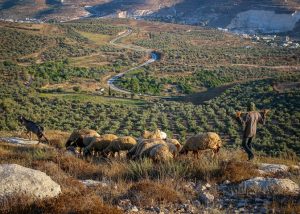
Competitiveness: The entire process of arriving at the core value of a specific village is essentially an exercise in identifying its competitive advantage. This process requires the identification of the key economic driver or drivers that, based on proper management of the local competencies, can serve as the vehicles for futuristic development of the particular villages. Tourism and agriculture are often identified as the main economic drivers of many of Palestine’s villages based on the diverse resources and skills of the various local communities. This notion requires particular care. Not all sectors are equal. Some are needed to drive the village clusters forward and others are essential investments to provide communities with basic needs such as medical treatment and education.
Partnerships and networking: This fourth aspect of community-based tourism is an essential methodology for communication plans, integrated promotions, cultural exchange, and national and international positioning of each village or cluster of villages.
Last, but not least, the challenge continues for each village to think of its core descriptive value and inherent distinctive beauty, to design its strategy based on this value, and to ensure its protection for the generations to come. Another challenge is for the relevant public-sector bodies to stand behind these values in order to enhance the protection and efficient utilization of Palestine’s diversity, beauty, and attractiveness, hence ensuring as wide a community participation and ownership as possible. A further challenge for all parties involved in designing or supporting Palestine’s strategies is to enhance PPCP, which stands for public, private, and civil-society partnership, an essential platform for strong and competitive local micro-tourism boards and destinations where the role of civil society is a basic prerequisite for sustainable success.


